10 reasons Zara McDermott is fitter than ever right now
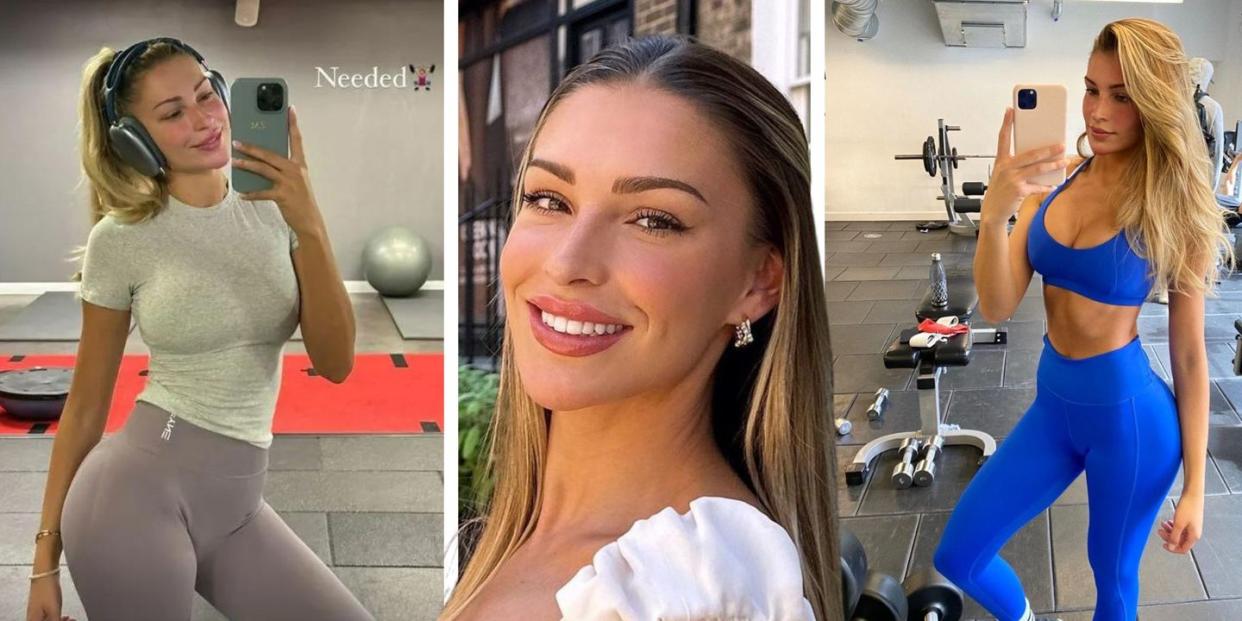
She may be new to the dance floor, but presenter and documentary maker Zara McDermott is no stranger to exercise. Trading viral TikTok routines for technical ballroom moves, the 26-year-old is currently channelling all of her energy into improving her dancing skills as a contestant in this year’s Strictly Come Dancing. It’s a challenge that’s way outside of her comfort zone, she shared in an Instagram Reel posted after week one of the competition.
‘Having never danced in front of anyone before in my entire life (no exaggeration!), walking into that studio a few weeks ago with less than zero dance experience and no confidence whatsoever, using a broomstick as a prop to help me… to doing what I did last night. I am so proud of myself,’ she wrote.
Where physical activity is concerned, the weights section is where McDermott feels most at home. She has been working on building strength, with the help of her personal trainer Gary Ward, for over two years, and has seen huge results.
An Instagram post shared by Ward in June of last year details her initial goals. ‘Zara came to me with the objective of improving her form, getting stronger and building muscle,’ reads the caption.
‘We stripped it all the way back and focused on mind body connection / tempo / breathing / focus and mobility. Once this all clicked her progression was phenomenal. Her #Tekkers has the GWF seal of approval and she can shift some serious weight!!!’
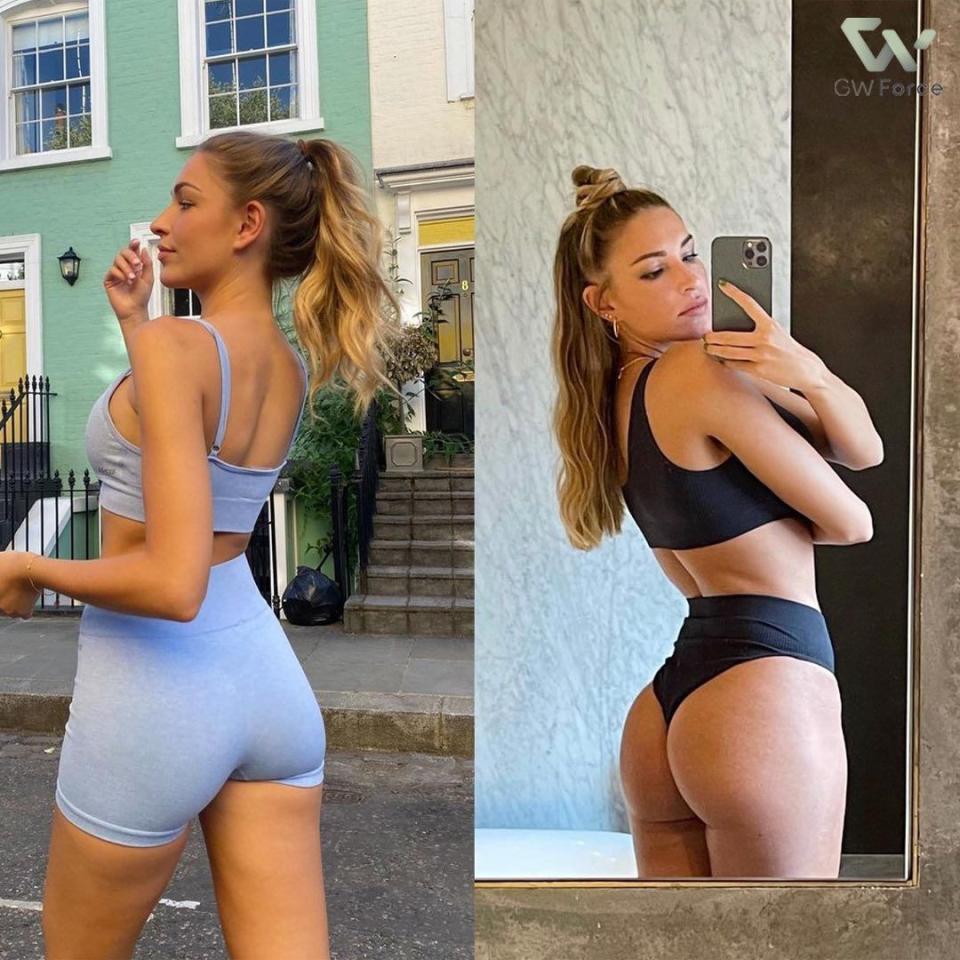
Wondering what she did to get so damn strong? In a video filmed last year for McDermott’s YouTube channel, Ward breaks down the workout routine he programmes for her, and the pair answer questions, sent in by her followers, relating to her training . Read on for everything we know about her workout routine.
10 things we know about Zara McDermott’s workout routine
1. Weight training is her bread and butter
While she’s currently in the studio training for Strictly, at the time of filming her aforementioned YouTube video, McDermott was lifting multiple times per week.
The specifics of her workout schedule vary every three-four weeks, Ward says, depending on which stage of training she’s in. Generally speaking, though, she does weight training four times per week:
Upper-body day (including deadlifts)
Lower-body day x 2
Full-body day
To begin with, Ward says he had McDermott doing lots of paused and slow reps to get her body used to strength training. Now, front squats, deadlifts and hip thrusts regularly feature in her sessions. ‘These are all very technical moves,’ Ward explains on YouTube. ‘Because her form is so good, she can do it and load.’
McDermott’s training sessions tend to be an hour long, with 40-45 minutes of lifting plus 15-20 minutes of mobility before and after the workout.
2. She lifts heavy
According to Ward, McDermott lifts at almost capacity in every session. In other words, she lifts very, very heavy weights. Her hip thrust PB, when the video was filmed last year, was a whopping 150kgs for 8 reps.
Because one of her main goals, when she began training with Ward, was to build strength, McDermott works within low rep ranges within each set to maximise results. Research indicates that a rep range of 1-5 per set at 80-100% of your one rep max (1RM) is favourable for increasing strength.
3. She focuses on form
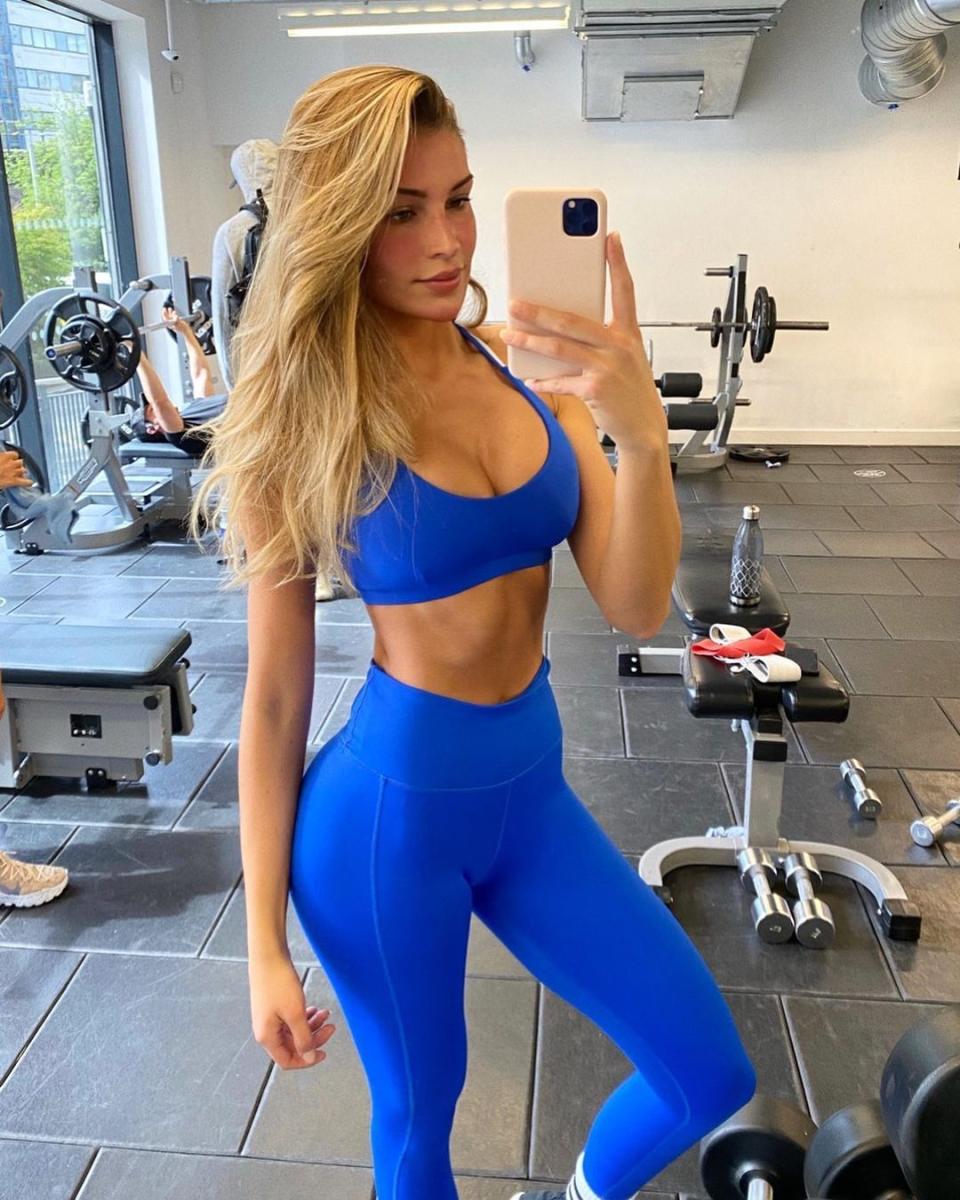
The reason McDermott is able to lift so heavy and develop her strength so impressively, is because she pays so much attention to her form. In fact, Ward routinely programmes mobility and core exercises that help her to polish her positioning in various movements.
When asked by a YouTuber subscriber about the exercises that helped facilitate her glute growth, McDermott credits lunges and deadlifts as some of her favourites for developing glute strength and hypertrophy. ‘I noticed a massive difference in my glutes when I started doing RDLs [Romanian deadlifts] and hip thrusts,’ she says – neither could be achieved safely without solid form.
Indeed, a study which explored glute activation levels during various strength exercises found that, along with step-ups, deadlifts and hip thrusts are among the exercises which are classified as eliciting very high level of GMax (gluteus maximus) activation. This means that the exercises in question are exceptionally good at targeting the glutes.
4. She prioritises mobility training
Mobility features heavily in McDermott’s workout routine. As a weight lifting novice, Ward emphasised mobility exercises within her programme to help her learn movement patterns and build strength within her full range of motion before adding load. Now, she does mobility work at the start of each session to switch on her glutes and core and prime her body to lift.
A 2014 study, which looked into the effects of mobility on stability during weight lifting, indicated that a 10-minute mobility routine may be more beneficial for improving stability during complex exercises, such as overhead squats, than a general warm-up (i.e., a few random stretches, rather than mobility moves that mirror the exercises you're about to do).
Sure enough, said study showed that participants were able to shift their centre of gravity for some exercises more easily after performing mobility, leading to improved posture.
5. She does a little cardio
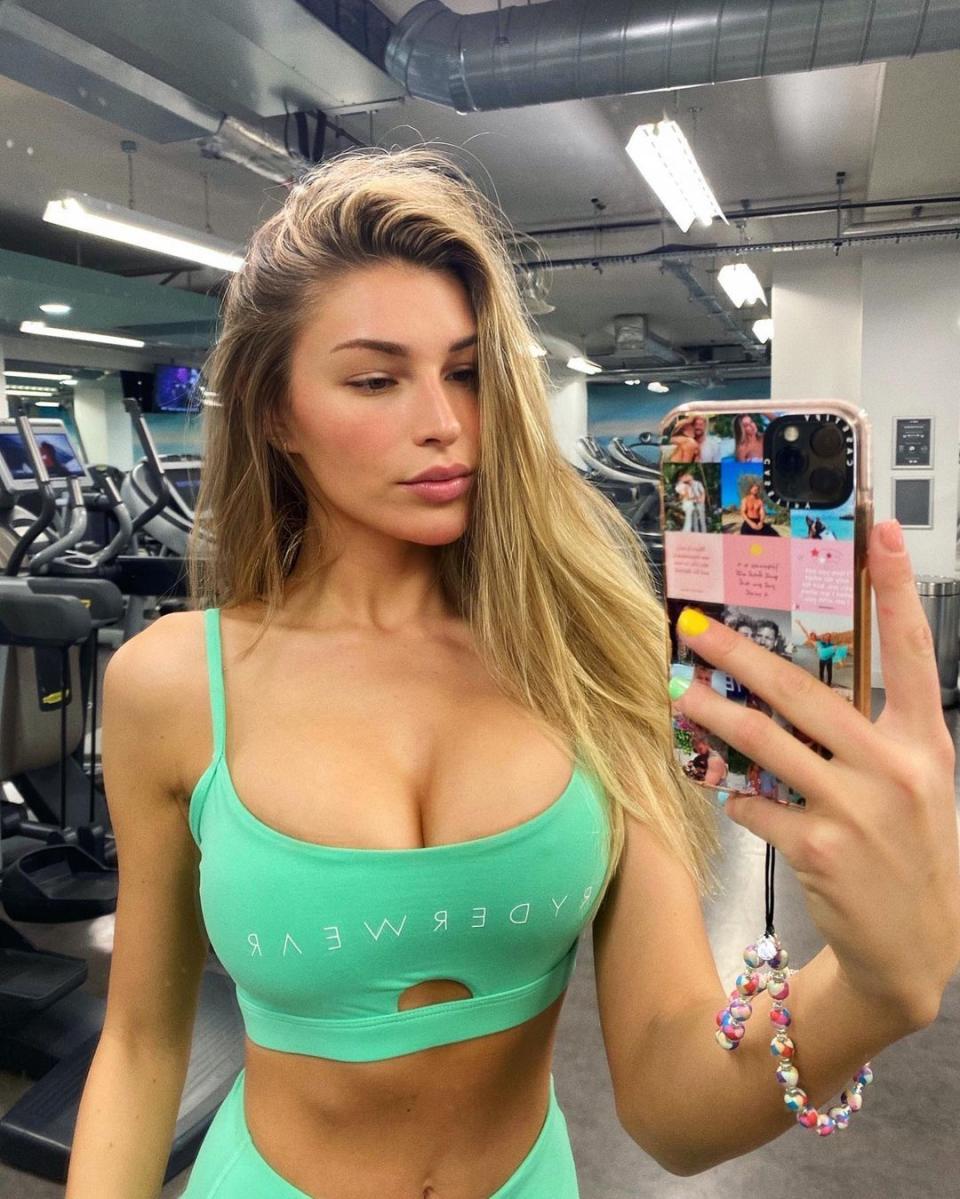
When asked how often she runs, McDermott responds matter-of-factly: ‘never,’ before adding that she thinks she should run more often. ‘You should run more if you want to run more,’ Ward says to her. ‘If you don’t want to run, you don’t have to run.’
He’s right – while running is great for improving cardiovascular health, the best exercise is exercise that you enjoy doing. If you favour hiking, dancing, boxing or swimming, for instance, over running – that’s OK.
Although McDermott mostly does weight training, she does make sure to get some cardio exercise in. ‘I’ll try and do a 30-minute uphill walk, or Stairmaster with no hands for 5-10 minutes – that really humbles you,’ she says.
While there's science to back up the health benefits of stair-climbing, it's not necessarily safe – or advisable – to use a Stairmaster hands-free. The recent trend of doing a Stairmaster workout without holding on is pinned on the theory that it helps to improve core strength.
However, PT Luke Worthington disproved this theory when he gave us the low-down on Stairmaster training earlier in the year. ‘The core has a role to stabilise the midsection against resistance, and transmits force between the upper and lower quadrants of the body. Going hands-free on a Stairmaster is absolutely not core training,' he said.
And, far and apart from anything else, using a Stairmaster hands-free can be unsafe. ‘The handrail is there for a reason,’ Worthington warns. ‘Stairmasters are sometimes quite high off the ground, and there’s a risk of tripping or falling if you don’t use the rail.'
6. She doesn’t do traditional 'ab workouts'
You won’t find any ab crunches in McDermott’s workout routine. Instead, Ward programmes mobility movements and isometric exercises, including holds and hangs, where the muscles contract without changing length.
Dead hangs, for instance (where you hang from a bar as though you’re about to begin a pull-up), don’t only build core strength – they’re also great for developing your grip strength too, which is important if your goal is to perform heavy deadlifts and such. One study, which explored the effects of dead-hang training programmes on grip strength found that grip endurance increased significantly after 4-8 weeks of performing dead hangs.
Because McDermott’s regime features a lot of compound exercises – movements that target multiple muscle groups – such as squats, she trains her core in every session. ‘You end up working your core when you do compound exercises because you need to have a strong core especially when you’re doing squats and deadlifts,’ she says.
7. She sets achievable goals
‘I think that motivation is always going to fluctuate,’ McDermott says when asked how she manages to stay so committed to her training routine. ‘My tip with motivation and staying on track is don’t ever give yourself something that’s unachievable to do.’
Aiming for multiple weekly gym sessions when you aren’t yet in the habit of going once, or overhauling your nutrition, she says, may be setting yourself up for failure as the ideal is too dissimilar to your current reality. ‘Give yourself some things that are achievable and then you can celebrate your small wins.’
8. She's consistent
Consistency is key if you want to see results from any type of training. Fortunately, it's something that McDermott has drilled. She is committed to strength training for one hour, four times per week (when she's not training for Strictly, that is).
The secret to staying consistent with her workouts, she says, is simple: she doesn't overcommit to the point where her workout routine feeling overwhelming or unmanageable. 'Training four times a week for an hour, I believe, is achievable,' she says. 'I know that I'm going to have gone to the gym four times this week – for me, that's good. That keeps me motivated because I know I can meet that goal.'
9. She works on her weaknesses
'Reverse lunges are my current favourite,' McDermott says when discussing the lower-body exercises she does for glute growth. But, that wasn't always the way.
'That was her worst exercise when we first started,' Ward says. 'She was like: "don't let me squat, and never ever lunge". What did we do? We lunged and squatted, made it good, got it out the way and now it's her favourite.'
There are always going to be exercises we enjoy doing more than others – more often than not, the ones we avoid expose our weaknesses, and the areas that need work. McDermott, committed to building strength, doesn't let a little discomfort stop her from progressing.
10. She trains her upper body to improve her lower-body strength
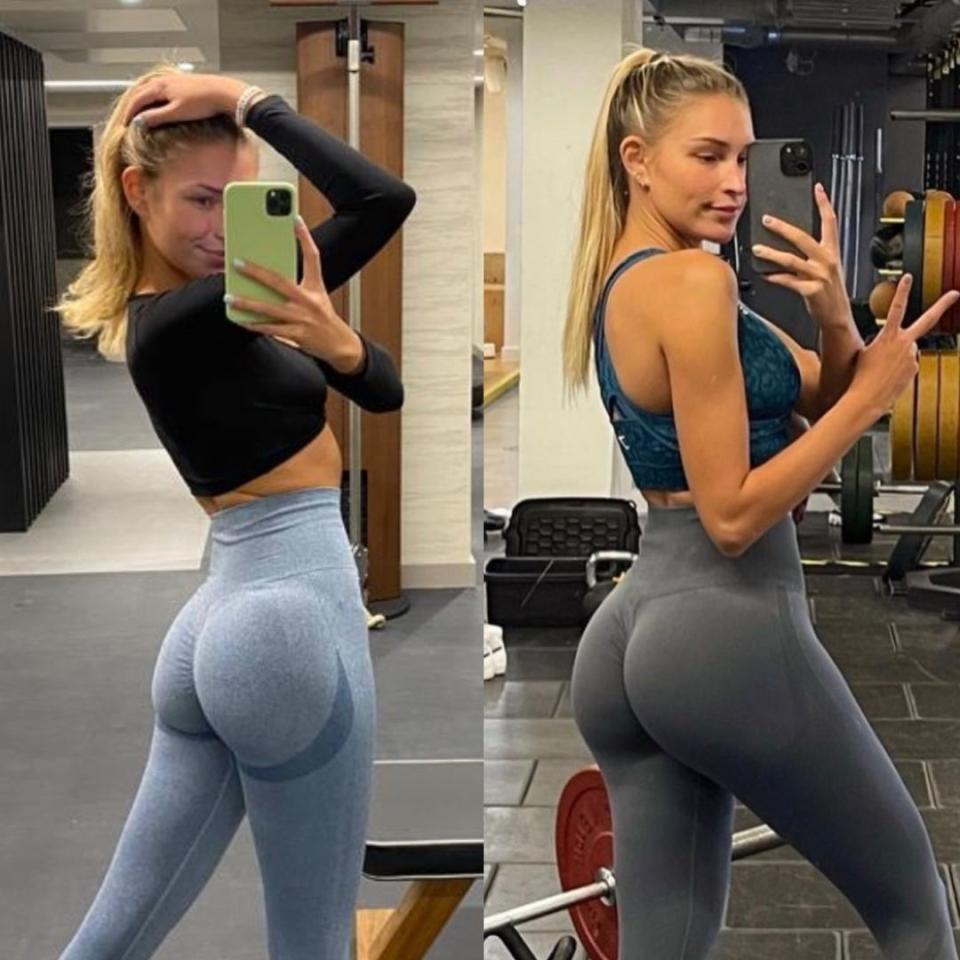
Speaking on how McDermott is able to hold so much weight to perform the likes of 80kg RDLs, Ward emphasises the importance of upper-body training – specifically core and grip strength.
'This is why you can't only work on your legs or leg strength, because when you hold weight, it builds your upper-body strength and allows you to hold 40kgs in each hand or 90kgs on a bar without straps, and allows your body to get used to holding that weight.'
While RDLs, for example, primarily target the posterior chain, including glutes and hamstrings, they require core and grip strength to perform.
Go Zara.
You Might Also Like


